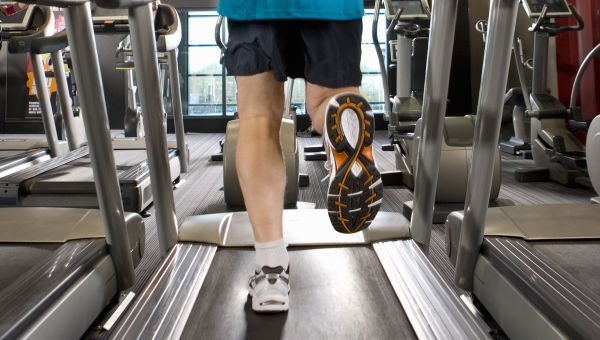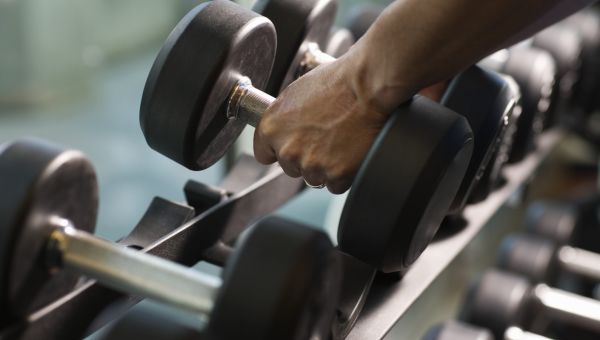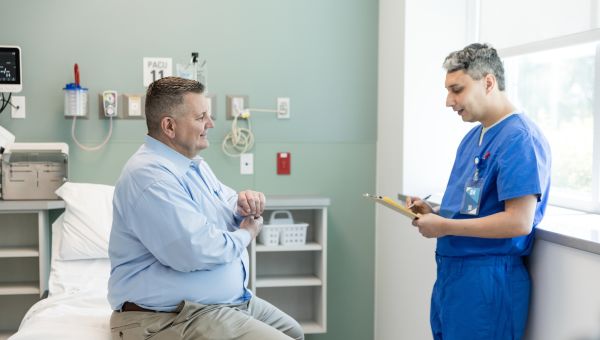5 essential reasons to exercise today
Regularly working out goes a long way toward protecting your health.
Updated on January 8, 2024

It’s easy to make excuses for not exercising. Feeling tired, fear of injury, or not knowing where to begin are all common reasons we may put off that workout.
But without regular physical activity, the risk increases for developing some serious illnesses later on in life, including Alzheimer’s disease, cancer, and cardiovascular troubles. The good news is that it can be simple to begin a fitness routine today, and you don’t have to go from zero to running marathons to enjoy the perks. Just about any amount of daily movement can help. Here’s how.

Keep Brain Function Strong
While you can’t prevent certain brain changes that occur naturally with age, you can help lower your risk of some issues by exercising. Not only does activity promote the growth of blood vessels in the brain, it supports the production, health, and survival of new brain cells—which could help safeguard your memory, your ability to think, and much more. For example, a 2020 study published in Preventive Medicine found that adults who got regular physical activity were half as likely to develop cognitive decline as those who didn’t exercise.
It's never too late to start, either. One 2020 study published in Applied Physiology, Nutrition, and Metabolism researchers found that older, sedentary, adult participants could significantly improve their memory and cognitive abilities by doing high-intensity interval training.
While high-intensity fitness is helpful, any activity can contribute to good brain health, including walking, swimming, gardening, and dancing. Experts recommend at least 150 minutes of moderate activity or 75 minutes of vigorous activity each week, plus two sessions of strength training.

Lower Mortality Rate
A longer, healthier life could become more attainable with regular exercise—even simple walking. For example, one 2022 analysis of studies published in Lancet Public Health found that for participants under age 60, the risk of mortality decreased as daily step count rose. Compared to people who walked about 3,500 steps each day, people who walked between 8,000 and 10,000 steps had a significantly lower risk of early death. For people over 60, the greatest reduction was associated 6,000 to 8,000 steps.
Another study, published in JAMA in 2020, examined a group of people over 40 and followed up with them over a decade, deriving similar results. Researchers found that the number of steps per day lowered participants risk of dying from any cause.
- People who took about 8,000 steps were half as likely to die from any cause than people who took about 4,000 steps.
- People who took about 12,000 steps per day were 65 percent less likely to die than those who took about 4,000 steps.
Researchers also found that the intensity of the steps was not linked to a lower risk—only the number of steps.

Boost Healthy Bones
It’s well established that we gradually lose bone mass as we age, and that weight-bearing exercises such as brisk walking, jogging, or climbing stairs can increase bone density. But other types of activity can strengthen and protect your bones, as well. Resistance training exercises, such as lifting weights and using resistance bands, work both muscle and bone. And balance training can help you become stronger overall and prevent falls as you age. Activities like tai chi, lunges, and walking backwards are popular, accessible options.

Prevent Heart Failure
Among its many cardiovascular benefits, you can help lower your risk of heart failure through exercise. That’s because physical activity improves heart health in several different ways. It can boost the heart’s ability to pump blood through the body, lower inflammation, aid weight management, and much more. In fact, one 2018 review published in the Journal of the American College of Cardiology analyzed several preventive strategies associated with lifestyle changes and found that increasing cardiorespiratory fitness is the “bottom line” of preventing heart failure.

Decrease Cancer Risk
Between one-third and one-half of all cancers globally may be prevented by making lifestyle and environmental changes such as quitting tobacco, limiting or avoiding alcohol, and maintaining a healthy weight. Research has also strongly and consistently demonstrated that getting regular physical activity can contribute, and may especially lower the risk of bladder, breast, colon, endometrial, esophageal, and gastric cancers.
Why? It’s partly because exercising helps to prevent or improve a number of conditions that raise cancer risk, including obesity, fatigue, blood clots, joint inflammation, and depression. It’s also known to improve insulin resistance, influence overall inflammation levels, and strengthen your cells’ abilities to repair themselves.
Movement of any kind helps our bodies in so many ways. Speak with a healthcare provider today about how a routine fitness program can help bring you a longer, healthier, and happier life.

Harvard Health. Exercise can boost your memory and thinking skills. February 15, 2021.
Kovacevic A, Fenesi B, Paolucci E, et al. The effects of aerobic exercise intensity on memory in older adults. Appl Physiol Nutr Metab. 2020 Jun;45(6):591-600.
Centers for Disease Control and Prevention. Division of Nutrition, Physical Activity, and Obesity: Physical Activity Boosts Brain Health. Last reviewed February 24, 2023.
Omura JD, Brown DR, McGuire LC, Taylor CA, et al. Cross-sectional association between physical activity level and subjective cognitive decline among US adults aged ≥45 years, 2015. Preventive Medicine. December 2020, Volume 141.
U.S. Department of Health and Human Services. Physical Activity Guidelines for Americans, 2nd Edition. December 2018.
Paluch AE, Bajpai S, Bassett DR, et al. Steps for Health Collaborative. Daily steps and all-cause mortality: a meta-analysis of 15 international cohorts. Lancet Public Health. 2022 Mar;7(3):e219-e228.
Saint-Maurice PF, Troiano RP, Bassett DR Jr, et al. Association of Daily Step Count and Step Intensity With Mortality Among US Adults. JAMA. 2020 Mar 24;323(12):1151-1160.
Harvard Health. Slowing bone loss with weight-bearing exercise. April 11, 2021.
National Institute of Arthritis and Musculoskeletal and Skin Diseases. Exercise for Your Bone Health. Page last reviewed May 2023.
Burrage MK, Hundertmark M, Valkovic L, Watson WD, et al. Energetic Basis for Exercise-Induced Pulmonary Congestion in Heart Failure With Preserved Ejection Fraction. Circulation, 2021;144:1664–1678.
Harvard Health Publishing. Exercise may heal the heart as well as prevent future problems. January 1, 2022.
Johns Hopkins Medicine. Exercise and the Heart. Accessed January 4, 2024.
Aggarwal M, Bozkurt B, Panjrath G, et al. American College of Cardiology’s Nutrition and Lifestyle Committee of the Prevention of Cardiovascular Disease Council. Lifestyle Modifications for Preventing and Treating Heart Failure. J Am Coll Cardiol. 2018 Nov 6;72(19):2391-2405.
Friedenreich CM, Ryder-Burbidge C, McNeil J. Physical activity, obesity and sedentary behavior in cancer etiology: epidemiologic evidence and biologic mechanisms. Mol Oncol. 2021 Mar;15(3):790-800.
World Health Organization. Preventing Cancer. Accessed January 4, 2024.
American Cancer Society. More than 4 in 10 Cancers and Cancer Deaths Linked to Modifiable Risk Factors. November 21, 2017.
GBD 2019 Cancer Risk Factors Collaborators. The global burden of cancer attributable to risk factors, 2010–19: a systematic analysis for the Global Burden of Disease Study 2019. The Lancet. August 20, 2022. 400; 10352:563-591.
Thomas R, Kenfield SA, Yanagisawa Y, Newton RU. Why exercise has a crucial role in cancer prevention, risk reduction and improved outcomes. Br Med Bull. 2021 Sep 10;139(1):100-119.
More On


video

article

slideshow


video


video
